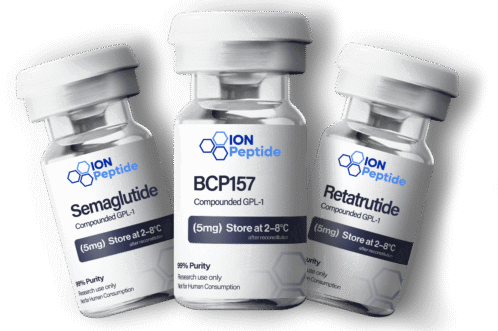Peptides vs Proteins
By Peptide Information
At IonPeptide.com, we believe that knowledge is power — especially when it comes to science. Our peptides are offered exclusively for in-vitro research purposes, giving scientists reliable tools to explore breakthroughs in medicine, biology, and biotechnology.
Important Notice: Our peptides are not approved for human or animal use, nor are they intended to diagnose, treat, or cure any disease. They are strictly for laboratory research and educational applications.
What are the Differences?
Peptides and proteins are closely related, but they’re not the same. While both are made of amino acids — the building blocks of life — they differ in size, structure, and biological function.
The term “peptide” is sometimes used interchangeably with “protein,” but peptides are typically shorter chains of amino acids, whereas proteins are much larger and more complex molecules that often fold into specific 3D shapes to carry out specialized tasks in the body.
Understanding the relationship between amino acids, peptides, and proteins is key to appreciating how they work together in biological systems — and why peptides are so important for research, diagnostics, and therapeutic development.
Amino Acids
Amino acids are small but incredibly important molecules that make up peptides and proteins. Each amino acid contains an amino group (NH₂), a carboxyl group (COOH), and a unique side chain that gives it distinct chemical properties.
When amino acids link together through amide (peptide) bonds, they form peptides. The smallest peptide, made of two amino acids, is called a dipeptide. Three form a tripeptide, and so on. These simple connections create the foundation for everything from short peptides to large, complex proteins.
Peptides
Peptides are short chains of amino acids connected by peptide bonds. They can range from just two amino acids to several dozen.
Oligopeptides: Typically fewer than 10 amino acids.
Polypeptides: More than 10 amino acids, forming longer chains that may fold into more complex shapes.
Peptides play a crucial role in biological processes, acting as messengers, regulators, and building blocks for larger proteins.
Polypeptides and Proteins
Polypeptides are simply longer peptide chains, generally 40–50 amino acids or more. Once a polypeptide reaches a certain length and folds into a stable 3D structure, it becomes a protein.
Proteins: Usually perform a specific function (e.g., hemoglobin transports oxygen in the blood).
Shorter Polypeptides: Often remain unstructured and do not form a stable shape.
Understanding this distinction is essential, as it explains why proteins are functionally more specialized while peptides often serve as regulators or signals.
Peptide Vs. Protein: Which Term to Use?
Technically, all proteins are made from polypeptide chains — but not all polypeptides are proteins. In research and product descriptions, the term “peptide” usually refers to shorter amino acid chains (fewer than ~50 amino acids), while “protein” refers to longer, structurally defined molecules.
This distinction helps researchers and clinicians communicate clearly about the molecules they are studying or using in experiments.


